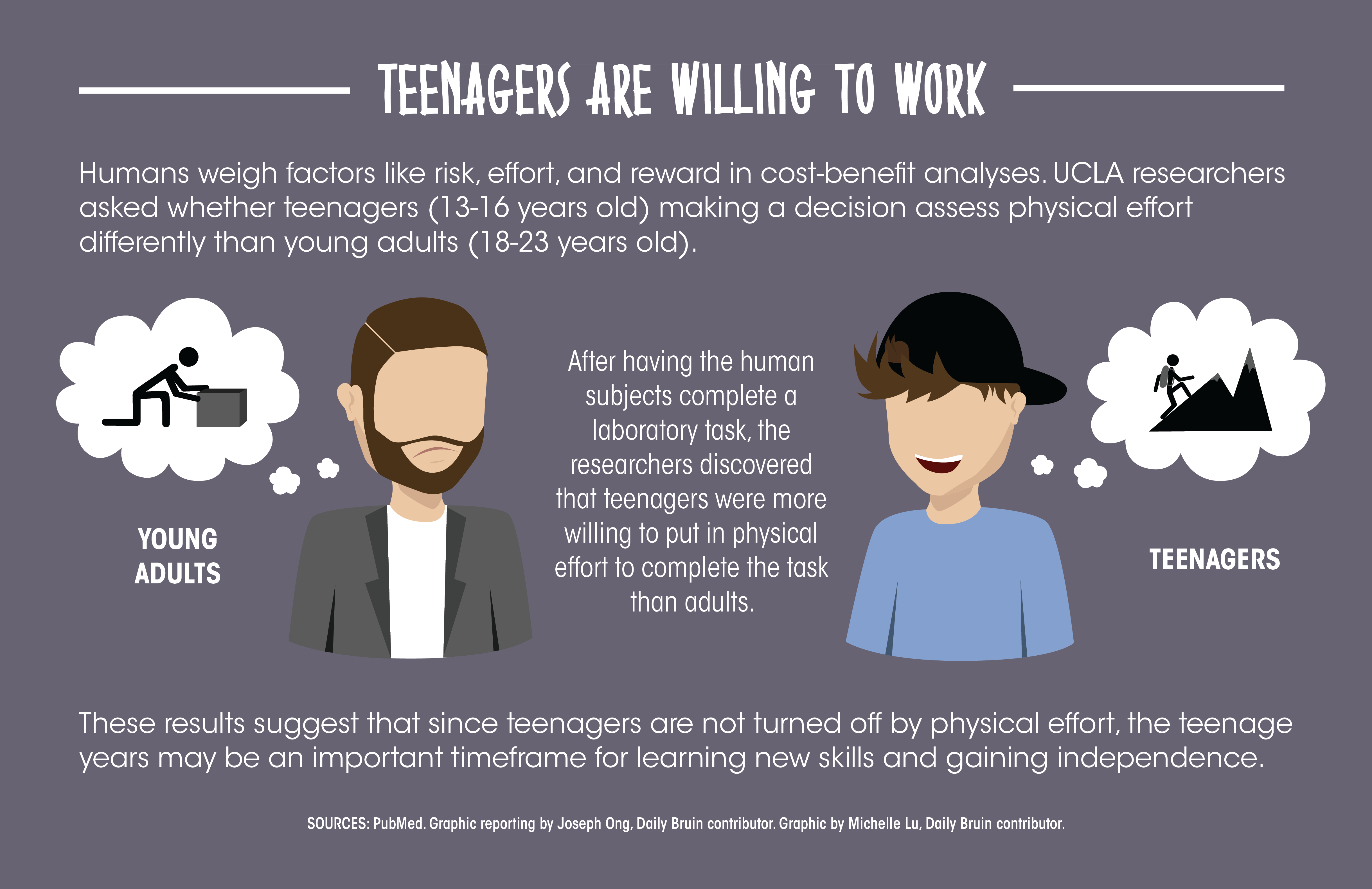Research shows teenagers may exert more effort to achieve goals than adults do

By Joseph Ong
May 22, 2019 11:42 p.m.
Teenagers are more willing to do physical work than adults, a new study from UCLA psychologists suggests.
In a study published in April and led by UCLA professor of psychology Adriana Galván, researchers determined teenagers may be more willing to exert more physical effort to accomplish a task or goal than young adults.
Holly Sullivan-Toole, a graduate student at Virginia Polytechnic Institute and State University and one of the lead authors of the study, said people weigh costs like time, risk and effort against rewards when making a decision. While other researchers have studied how time and risk affect a teenager’s decision-making process, less is known about how teenagers assess physical effort, she added.
To assess the role of physical effort in decision-making, the researchers designed a video game in which teenagers and young adults pressed buttons on a computer keyboard to charge up one of six virtual laser guns called blasters. The subject could shoot cartoon aliens once the blaster was fully charged.
Each blaster required a different number of keystrokes to charge, and blasters that required more keystrokes to charge would shoot more aliens, Sullivan-Toole said.
Since each blaster had different charging requirements, the researchers could measure how much physical effort each subject was willing to put in to get a reward by measuring a subject’s preference for a blaster, said Samantha DePasque Swanson, a former postdoctoral scholar in the Galván lab and the study’s co-lead author.
Teenagers and adults both recognized that some blasters took more effort to charge, Sullivan-Toole said. Adults preferred blasters that took a low or medium amount of effort, but teenagers had no preference between low- or medium-effort blasters, DePasque Swanson said.
These results suggested the amount of physical effort needed to complete a task mattered less to teenagers, Sullivan-Toole said.
“Teenagers seem less affected by (physical) effort costs when compared to adults,” she said.
DePasque Swanson said even though the study used keystrokes as a measure of physical effort, she thinks the results apply to broader physical activities, too.
One possible explanation for this observation is that the area of the brain that considers the cost of physical effort is still developing in teenagers, so a teenager might not consider physical effort as thoroughly as an adult would, according to the study.
Bailey Holt-Gosselin, a former research assistant in the Galván lab and an author on the study, said another explanation could be that adults have less time and energy than teenagers, so adults have to be more strict about how they spend their efforts.
DePasque Swanson said the study highlights the teenage years as a formative time in development. Since teenagers are more willing to put in physical effort into their work, they may try new experiences or develop new skill sets that can foster a sense of growth and independence, she added.
The study demonstrates how human psychology changes during development and how the teenage years play a role in personal growth, Holt-Gosselin said.
“If we know (teenagers) are willing to expend extra effort, it’s a good time to (give them challenges to grow),” Holt-Gosselin said.
Sullivan-Toole said she hopes the study can help change the common perception of teenagers as being troubled or rebellious.
“A lot of work has cast adolescents in a negative light,” Sullivan-Toole said. “(Our work suggests) adolescence is just a different time in development.”

